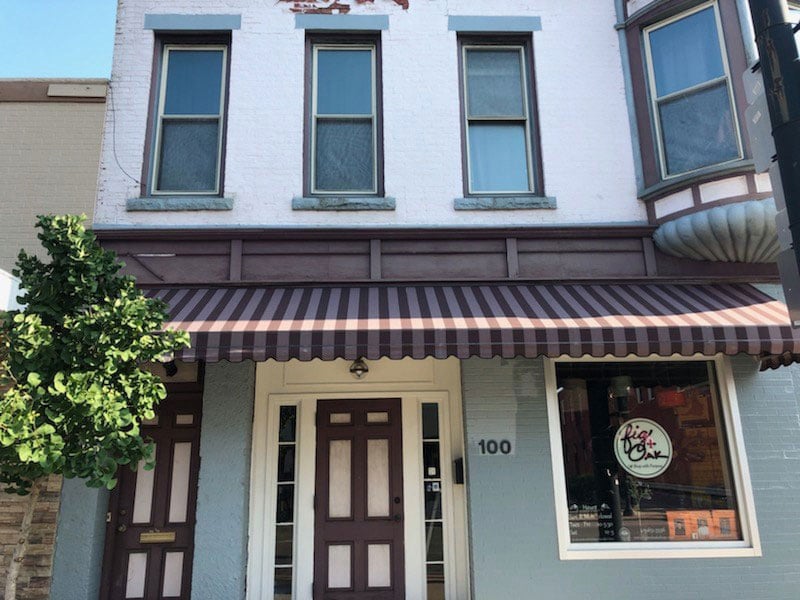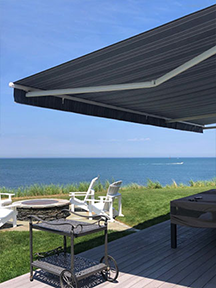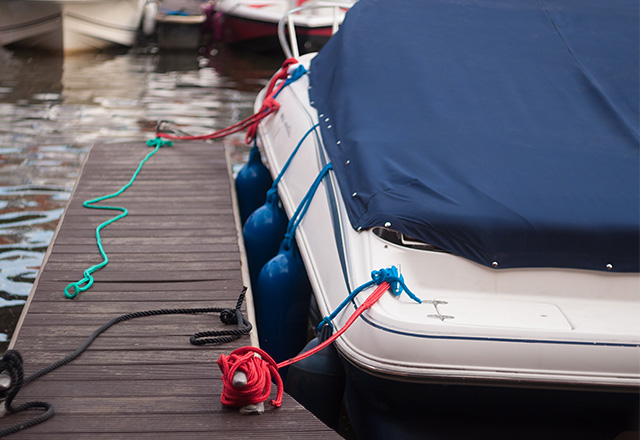Acrylic Fabric Bonding with Acrylic Cement
Acrylic materials popular in awnings, marine and outdoor leisure products are not weldable. However, there was great demand to bond these materials to eliminate leaking seams, short hot thread life and thread fade.
One of the key benefits of using acrylic bonding products is their low odor, which significantly enhances the user experience and overall performance, particularly in terms of adhesion and bonding strength.
Miller Weldmaster, along with other industry leaders, developed thermal bonding process. Using hot air, hot wedge, impulse and radio frequency welding plus a special laminated tape that has a very strong adhesive on both sides, creates an extremely durable bond. Perfect for acrylic welding, the adhesive is heat activated followed by pressure from the acrylic bonding rollers and bars, producing a very strong bond.
What is Acrylic Fabric Bonding?
Acrylic fabric bonding is a process that involves joining two or more pieces of acrylic fabric together using a specialized adhesive. This technique is commonly used in various industries, including awnings, marine, and outdoor leisure products, where acrylic materials are widely used. Acrylic fabric bonding offers a strong and durable bond, making it an ideal solution for applications where high strength and flexibility are required. By using this method, manufacturers can ensure that their products are not only robust but also resistant to environmental factors such as moisture and UV exposure.
What is Acrylic?
Acrylic is synthetic fibers made from a polymer. A man-made, high performance material, acrylic is known for its moisture wicking property.
Why Weld Acrylic?
Acrylic welding is common in a number of applications. Many industries use acrylic for the following benefits:
- Oil and chemical resistance
- Moisture resistance
- UV resistance
- Outdoor weathering
- High tenacity and strength
Types of Acrylic Adhesives
Acrylic Cement
Acrylic cement is a popular choice for bonding acrylic sheets. It works by chemically melting the surfaces of the acrylic, allowing them to fuse together as the solvent evaporates. This method creates a strong, durable bond that is often stronger than the acrylic itself. When working with clear acrylic, it is crucial to use the right glue to maintain a clean and aesthetically pleasing finish. Tensol 70, a water-thin catalyst cement, is optimal for achieving strong bonds between larger acrylic pieces. It requires thorough mixing before application and flows evenly between smoothly joined surfaces, ensuring an effective bond without creating unsightly messes.
Types of Acrylic Adhesives
There are several types of acrylic adhesives available, each with its own unique characteristics and applications. Some common types of acrylic adhesives include:
- Cyanoacrylate Adhesives: Known for their fast-drying properties, cyanoacrylate adhesives are ideal for bonding acrylic to other materials like plastics, metals, and glass. They offer a quick and strong bond, making them suitable for various industrial applications.
- Acrylic Cement: Specifically designed for bonding acrylic to acrylic, acrylic cement comes in various forms, including liquid, gel, and film. It provides a clear and durable bond, perfect for applications requiring a completely clear finish.
- Gorilla Glue Gel: This popular adhesive is versatile and can bond acrylic to other materials such as plastics, metals, and glass. However, it is not recommended for use on mirror acrylic or engraved surfaces due to its strong bonding properties.
- Low-Surface-Energy Adhesives: These adhesives are formulated to bond acrylic to other low-surface-energy materials like certain plastics and metals. They are particularly useful in applications where traditional adhesives may struggle to create a strong bond.
Preparation for Bonding
Before bonding acrylic fabric, it is essential to prepare the surface properly to ensure a strong and durable bond. The preparation process includes:
- Cleaning the Surface: Use isopropyl alcohol to remove any dirt, dust, and oils from the acrylic fabric. This step is crucial as contaminants can weaken the bond strength.
- Drying the Surface: Ensure the surface is completely dry before applying the adhesive. Moisture can interfere with the bonding process and reduce the effectiveness of the adhesive.
- Applying a Primer or Surface Treatment: To improve bond strength, apply a primer or surface treatment to the acrylic fabric. This step enhances the adhesive’s ability to bond with the fabric, resulting in a more robust and long-lasting bond.
Bonding Acrylic Fabric
Bonding acrylic fabric involves applying the adhesive to the prepared surface and then joining the two pieces of fabric together. The bonding process can be done using various techniques, including:
- Heat Sealing: This technique involves applying heat to the adhesive to activate it and create a strong bond. Heat sealing is commonly used in applications where a durable and flexible bond is required.
- Hot Wedge: Using a hot wedge, pressure is applied to the adhesive, creating a strong bond between the acrylic pieces. This method is effective for producing a consistent and reliable bond.
- Impulse Welding: This technique uses a high-frequency electrical impulse to create a strong bond. Impulse welding is known for its precision and ability to produce a clean and durable bond.
Bonding Acrylic to Other Materials
Acrylic can be bonded to other materials, including plastics, metals, and glass, using various adhesives and techniques. Some common methods include:
- Cyanoacrylate Adhesive: Ideal for bonding acrylic to plastics, metals, and glass, cyanoacrylate adhesive offers a quick and strong bond, making it suitable for a wide range of applications.
- Acrylic Cement: When bonding acrylic to other acrylic materials, acrylic cement provides a clear and durable bond. It is available in different forms, including liquid, gel, and film, to suit various needs.
- Low-Surface-Energy Adhesive: Designed for bonding acrylic to low-surface-energy materials, these adhesives are perfect for applications where traditional adhesives may not be effective.
- Gorilla Glue Gel: This versatile adhesive can bond acrylic to other materials like plastics, metals, and glass. However, it is not recommended for use on mirror acrylic or engraved surfaces due to its strong bonding properties.
By understanding the different types of adhesives and techniques available, you can choose the best method for bonding acrylic to other materials, ensuring a strong and durable bond for your specific application.
What Tape or Cyanoacrylate Adhesive Do You Use To Weld Acrylic?
The Fabric Bond Tape and Fabric Bond FR Tape was designed for welding awnings, shades and marine products. It eliminates the need for thread matching, is proven with multiple welding technologies, and creates a clean, waterproof seam. It can be used on multiple materials including Sunbrella®, Sunbrella® Plus, Firesist® and other industry acrylic materials from around the world.
To achieve a proper weld, your machine settings must be correct. This will vary depending on the type of machine you have and material. View our machine specific training videos below for a step by step guide on how to setup your acrylic welding.
Acrylic Welding Machines
Contact us with any questions you may have about how to weld acrylic fabric or about our acrylic welding machine options.
With multiple technologies available, Miller Weldmaster will help you select the best technology for your application.
“After a lot of years trying and using different welding tape, I find this tape to be the best so far! It is very flexible after welding, does not cause material to change shades of color and is more pliable. I highly recommend the Fabric Bond Tape”
– Phil Russel, P.C.R. Restorations, Inc
If you do not see your fabric listed to the left, please contact us and tell us about your fabric welding needs.
If you do not see your fabric listed to the left, please contact us and tell us about your fabric welding needs.











